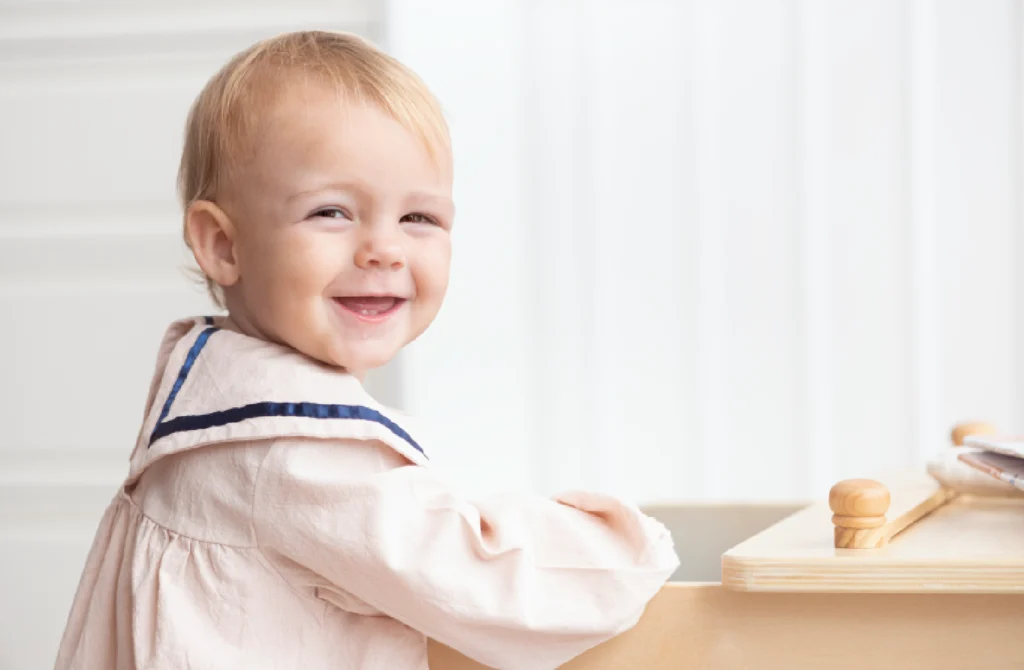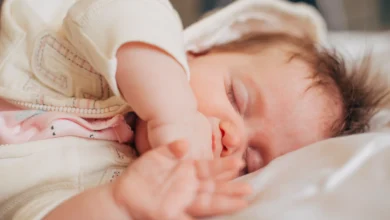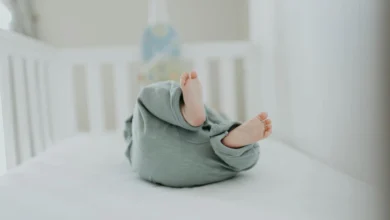As you navigate the early days of parenthood, you might wonder how long you’ll be in the newborn phase. The newborn stage is a significant period, and understanding its duration can help you prepare for the changes that come next.
Generally, the newborn stage is considered to be the first few weeks of life, but the exact duration can vary. You’re likely eager to know what to expect during this period and when you’ll be able to consider your little one as having moved beyond the newborn phase.
Key Takeaways
- The newborn stage is a critical period of development.
- Understanding the duration of the newborn stage can help you prepare for what’s next.
- The length of the newborn stage can vary.
- Knowing what to expect during this period can ease the transition.
- You’re not alone in wondering when your baby will no longer be a newborn.
Understanding the Newborn Stage
The term ‘newborn’ refers to a baby in the initial stages of life, but what does this stage truly entail? The newborn stage is a period of significant growth and development, and understanding its nuances can help you better care for your baby.
To grasp the concept of the newborn stage, it’s essential to delve into its medical definition and how it differs from other stages of infancy. This understanding will provide a foundation for recognizing the unique needs of your newborn.
Medical Definition of a Newborn
A newborn is typically defined as a baby in the first few weeks of life. Medically, this stage is characterized by the baby’s adaptation to the outside world, involving various physiological changes. The World Health Organization defines a newborn as a baby within the first 28 days of life, a period critical for health and developmental assessments.

Differences Between Neonate, Newborn, and Infant
While often used interchangeably, the terms neonate, newborn, and infant have distinct meanings. A neonate refers specifically to a baby in the first four weeks of life, emphasizing the earliest stage of life. A newborn is a more general term that can refer to a baby in the first few weeks of life. An infant, on the other hand, encompasses a broader age range, typically up to one year of age.
Understanding these definitions can help you navigate the various stages of your baby’s development and make informed decisions about their care.
When Is a Baby No Longer a Newborn? Key Signs and Milestones
You’ll know your baby is growing out of the newborn phase by looking out for certain physical, sleep, and behavioral changes. As your baby develops, several key indicators will signal that they are no longer a newborn.

Physical Development Indicators
One of the first signs that your baby is no longer a newborn is their physical growth. You might notice that your baby’s weight and length have increased significantly since birth. Typically, babies double their birth weight by around 5 months, indicating a strong growth trajectory.
Another physical indicator is the improvement in their motor skills. At around 1-2 months, babies start to show better control over their movements. They might begin to lift their heads while on their stomachs, a crucial milestone in their physical development.
Sleep Pattern Changes
Newborns are known for their irregular sleep patterns. As your baby grows, you can expect their sleep schedule to become more predictable. A more consistent sleep routine is a good sign that your baby is transitioning beyond the newborn stage. By around 3-4 months, many babies start sleeping for longer stretches at night.
Social and Behavioral Developments
Socially and behaviorally, your baby will start to show more interaction with their environment. They might begin to smile in response to social interactions, a significant developmental milestone. By around 2 months, babies often start cooing and making other sounds to communicate.
As your baby continues to grow, they will become more aware of their surroundings and the people in them. They might start to show preferences for certain toys or activities, indicating a developing personality.
Understanding these changes can help you gauge when your baby is no longer a newborn. By observing these physical, sleep, and behavioral developments, you’ll have a clearer idea of your baby’s growth stage.
Practical Transitions Beyond the Newborn Phase
As you navigate the end of the newborn stage, several key transitions will help ensure your baby’s continued comfort and growth. The newborn phase may be emotionally challenging, but with practical adjustments, you can better support your baby’s evolving needs.
Clothing Sizes and When to Size Up
One of the most noticeable changes as your baby grows is the need to update their wardrobe. Newborn clothes are designed for the initial few weeks, and soon you’ll find yourself needing to size up. Most newborn clothes are designed for babies up to 5-6 pounds, with the next size, “0-3 months,” accommodating slightly larger babies. When choosing clothes, consider the season and your baby’s comfort. For instance, infant winter clothes should be warm and layered to adjust to changing indoor and outdoor temperatures.
To determine when to size up, check the clothing size chart provided by the manufacturer, as sizes can vary between brands. A good rule of thumb is to have a mix of sizes ready, as babies grow at different rates. You may need to transition from newborn tights to larger sizes or switch to toddler joggers as your child becomes more active.
| Age | Typical Weight | Clothing Size |
| 0-1 month | 5-8 pounds | Newborn |
| 1-3 months | 8-12 pounds | 0-3 months |
| 3-6 months | 12-16 pounds | 3-6 months |
Adjusting Feeding and Care Routines
As your baby grows, their feeding and care needs change. You may need to adjust the frequency or volume of feedings, whether you’re breastfeeding or using formula. Pay attention to your baby’s cues to determine the right adjustments. Additionally, as your baby becomes more alert and interactive, their care routine may need to incorporate more stimulation and play.
Moving from Newborn-Specific Products
Many products are designed specifically for newborns, from diapers to bathing products. As your baby grows, you’ll need to transition to products suited for older infants. For example, you may need to switch from newborn diapers to larger sizes or move from a newborn bath tub to a larger infant tub. Consider your baby’s comfort and your convenience when making these transitions.
By being mindful of these practical transitions, you can better support your baby’s growth and development beyond the newborn phase.
Conclusion
As you navigate the early days of parenthood, understanding when your baby is no longer a newborn can be a valuable milestone. Generally, the newborn phase is considered to be the first few weeks of life, but the exact timing can vary. By recognizing key developmental milestones and making practical adjustments in care and products, you can better understand when your baby has moved beyond the newborn stage.
Typically, a baby is considered a newborn from birth to around 4-6 weeks of age. During this period, they undergo significant physical, social, and behavioral developments. As your baby grows, you’ll notice changes in their sleep patterns, feeding needs, and overall behavior, signaling the end of the newborn phase. By the time they reach around 3 months, they are often considered infants, and their needs and care requirements change accordingly.
While a 3-year-old is indeed considered a toddler, the journey from newborn to toddler is a significant one. Understanding the different stages, from newborn to infant to toddler, can help you prepare for the unique challenges and joys that come with each phase, including knowing when to size up in clothing and adjusting your care routines.
FAQ
How long is the newborn stage?
The newborn stage is generally considered to be the first few weeks of life, typically up to four weeks, but can vary depending on the definition used.
What is considered a newborn?
A newborn is typically defined as a baby in the first few weeks of life, with the term neonate referring specifically to a baby in the first four weeks.
When does the newborn stage end?
The newborn stage ends when your baby is no longer considered a newborn, usually around four weeks, but this can vary as every baby develops at their own pace.
What size clothes do newborns wear?
Newborns typically wear newborn-sized clothes, which are designed for babies up to a certain weight and height, usually around 5-8 pounds and up to 21 inches in length.
When should I size up from newborn clothes?
You’ll know it’s time to size up when your baby outgrows their newborn clothes, usually when they reach a certain weight or height, and you can move to the next size, often labeled as “0-3 months” or “infant.”
What is the difference between a neonate, newborn, and infant?
A neonate refers to a baby in the first four weeks of life, a newborn is a more general term for a baby in the first few weeks, and an infant is a broader term that encompasses babies up to one year of age.
At what age is a baby no longer a newborn?
A baby is generally no longer considered a newborn around four weeks of age, but this can vary depending on their development and individual growth.
What are some signs that my baby is no longer a newborn?
Signs that your baby is no longer a newborn include physical developments like increased weight and length, changes in sleep patterns, and social and behavioral developments like interacting more with their environment.
How do I adjust my baby’s feeding and care routines as they grow?
As your baby grows, you’ll need to adjust their feeding schedule, sleep routines, and overall care to meet their evolving needs, which may involve more frequent feedings at first, gradually becoming less frequent as they grow.
What is considered preschool age?
Preschool age typically refers to children between the ages of three and five years old, who are preparing to enter formal education.
Is a three-year-old a toddler?
Yes, a three-year-old is generally considered a toddler, as this stage typically spans from around one year old to three or four years old, depending on the definition used.


